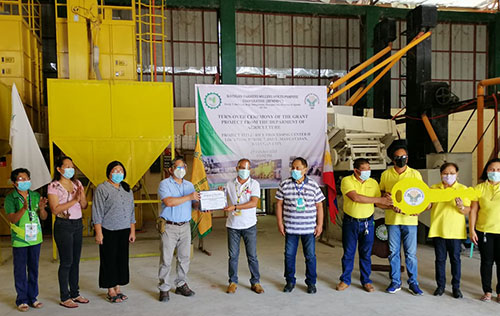 |
Additional mechanical dryer from the government is now ready to serve the rice farmers in Caraga as the harvest period for the wet cropping season begins.
The Department of Agriculture – Caraga has turned over a P14.22 million Rice Processing Center (RPC) II to Bayugan Farmer Millers Multi-Purpose Cooperative (BFMMPC) on October 1.
The RPC II is situated in Barangay Maygatasan, Bayugan City. The center has a multi-pass rice mill with a one-ton per hour capacity that gives the farmers a 65% rate of their produce. Three units of recirculating dryers with 6 tons capacity each equipped with biomass fed-furnace, and a warehouse.
DA-Caraga Regional Executive Director Abel James I. Monteagudo said that the operation of BFMMPC is expected to help the rice farmers who wanted to dry their palay this harvest season.
“The RPC will improve the rice quality. This will also augment the National Food Authority’s drying facilities that provide farmers efficient drying and offers cheaper operation cost compared to private commercial palay driers,” said Monteagudo.
According to International Rice Research Institute, drying reduces the grain moisture content to a safe level for storage. It is the most critical operation after harvesting a rice crop.
When rice is harvested, it will contain up to 25% moisture. High moisture levels during storage can lead to grain discoloration, encourage the development of molds, and increase the likelihood of attack from pests. It can also decrease the germination rate of the rice seed.
It is important to dry rice grain as soon as possible after harvesting— ideally within 24 hours. Delays in drying, incomplete drying, or ineffective drying will reduce grain quality and result in losses.
As of today, 12 RPC’s are now operational and provide drying and milling services in the region at an average of ₱1.80 per kilo and ₱90 per sack for the member or non-member of the FCA’s.
The RPC’s were established in farm clusters devoted to rice cultivation. This is to lessen the dependence of smallholder farmers on the low buying price from rice traders and bring down post-harvest losses. (Rhea C. Abao, Information Officer II DA-Caraga RAFIS)






